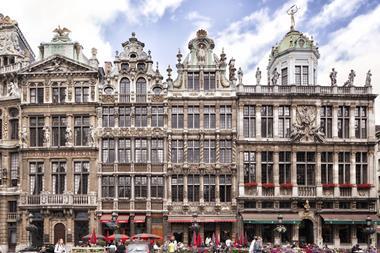India, with its traditions of democracy and tolerance, is likely to be one of 2016’s ‘good stories’, writes Joseph Mariathasan
“The world is on fire” declared Anders Fogh Rasmussen, the former NATO secretary general, in the opening speech of the 2015 IPE Conference & Awards. For him, four key stories will drive geopolitical movements and the global economy in the coming decades.
The “extremely bad story”, he thought, was the Middle East, and few would dispute that, although they may dispute both the trigger for the current chaos and what the steps towards establishing a stable solution would be.
The “bad story”, he said, was Russia. As a former head of NATO, perhaps one could argue there was a hint of bias there. But as he argued, the current Putin-led leadership is obsessed with restoring the idea of Russian greatness. This can be seen in the concept of EuroAsianism, the idea a Christian Orthodox Greater Russia can stride the world alongside the US, Europe and China. That philosophy can be evidenced in the links Russia is cultivating with its fellow Orthodox country, Greece. But, as Rasmussen added, the falling oil price has meant a Russia in decline. That creates a more unstable environment, which does not bode well.
But moving onto a positive note, Rasmussen argues that China is a good story. Despite the negative headlines in the press over disputes in the South China Sea, China, Rasmussen argues, prefers peaceful co-operation. The regime’s survival requires economic growth, which is dependent on an effective global trading system. Moreover, the persistent Beijing smog is a powerful reminder China needs transfer of new technology to tackle the severe challenges it faces such as heavy pollution.
The very good story Rasmussen sees is the US, which he predicts will maintain its global leadership for decades to come. Unlike Europe, Russia and China, it has secure borders and faces no threats from hostile neighbours. Indeed, the mega companies of tomorrow are more likely to arise from the US than anywhere else in the world.
Rasmussen, though, may have left out another good story, which is likely to have a major impact on geopolitical and economic trends in the years going forward. That is India. To appreciate the context, it is worth remembering that, prior to the collapse of the Soviet Union, India was far closer to the USSR than to the US, which had instead backed Pakistan as a counterweight to Soviet influence in India. During the 1971 Indo-Pakistan war that led to the liberation of Bangladesh, the US under president Richard Nixon supported Pakistan.
That experience coloured relations until the dissolution of the Soviet Union. US president Bill Clinton imposed sanctions on India in 1998 following its nuclear tests, although only Japan joined the US. Meanwhile, India during the whole period post-independence in 1948 had also fallen far behind China in growth rates, and anyone who has visited both countries can see the contrast in the state of the infrastructure. It may still take a generation for India to catch up.
The remarkable change that has occurred, though, was from 2004 onwards, when after the sanctions, US policy reversed with the creation of what amounts to an almost strategic partnership between the world’s most powerful democracy and the world’s most populous. Relations between the two have become so close that some have argued US foreign policy in the region has been delegated to India.
But if that is the case, India has not yet risen to the challenge. It lacks an effective, long-term strategic foreign policy towards its neighbours in the region, or a well-staffed foreign service, along with the paraphernalia of think tanks focused on foreign policy able to contribute to the formulation of policy in the US. That, however, may change, particularly as India strives to achieve its objective of a permanent seat on the UN Security Council.
To achieve success requires economic clout. But, in the last couple of years, India’s growth rate has also increased to be comparable with that of China and may even surpass it in the years ahead, as the country’s demographic advantage starts kicking in more powerfully. India’s rise, with its traditions of democracy and tolerance, should be a positive force for good despite its many and well-publicised problems. Hopefully, if Rasmussen gives his talk in another decade, there will be more good stories than bad.
Joseph Mariathasan is a contributing editor at IPE







No comments yet